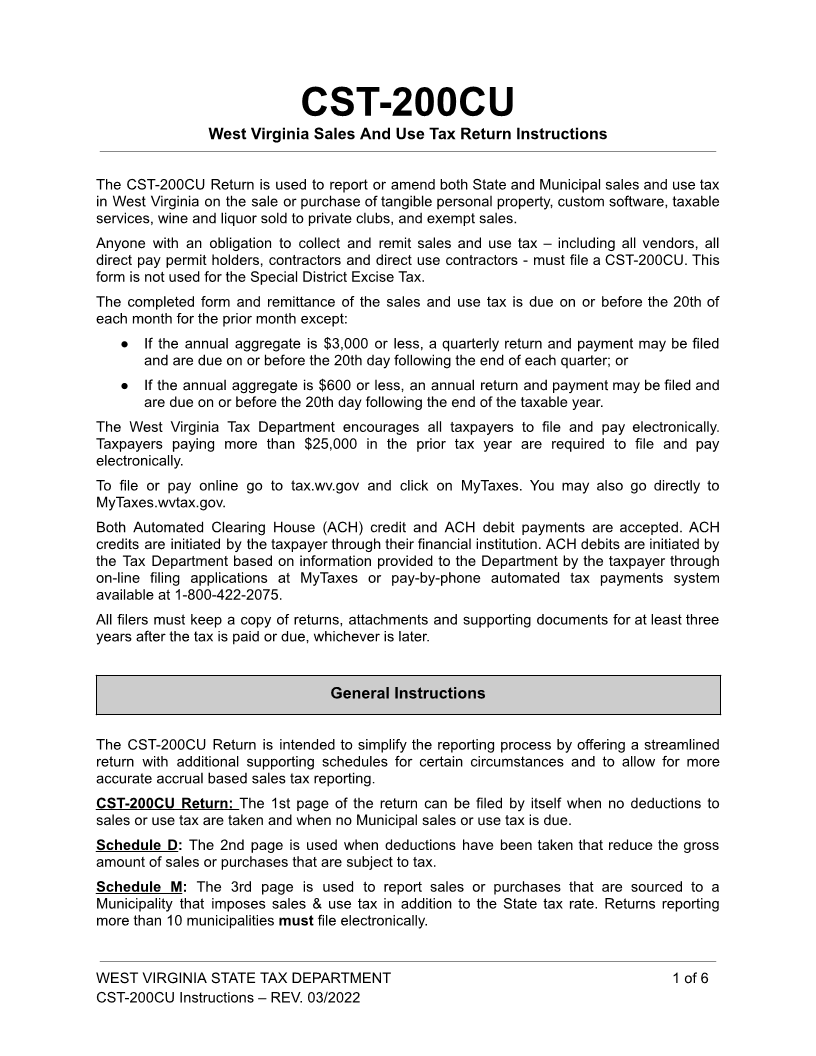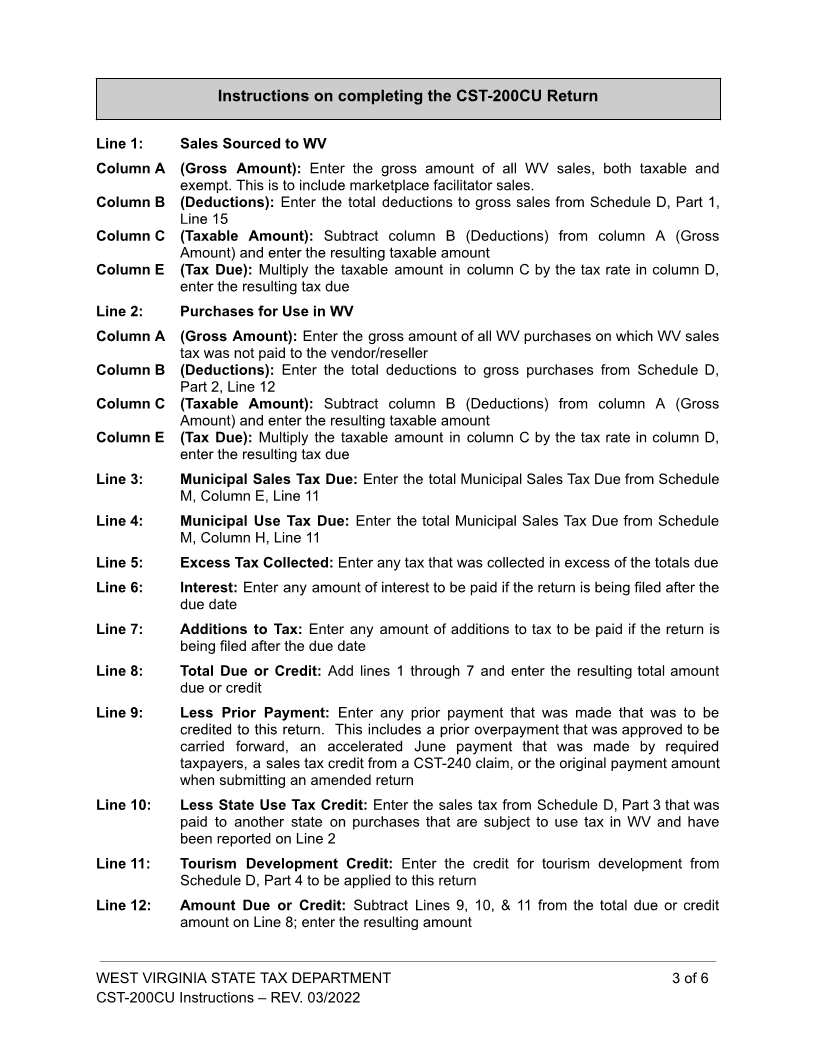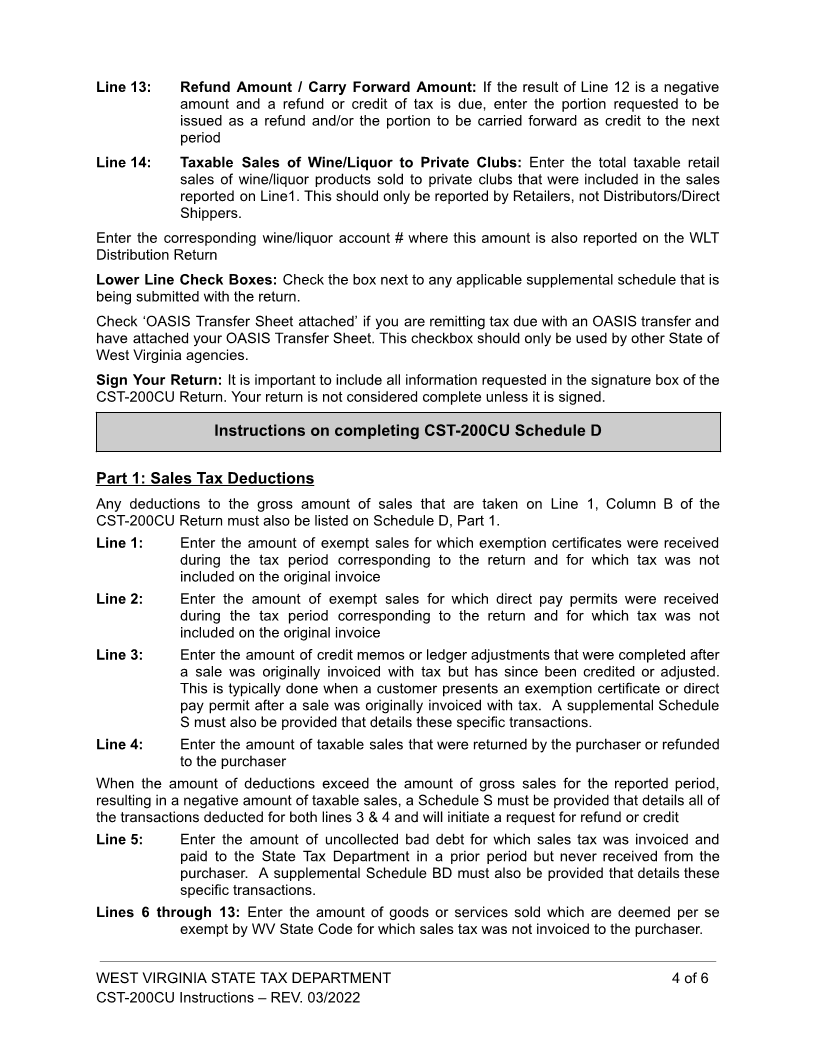
Enlarge image
CST-200CU
West Virginia Sales And Use Tax Return Instructions
The CST-200CU Return is used to report or amend both State and Municipal sales and use tax
in West Virginia on the sale or purchase of tangible personal property, custom software, taxable
services, wine and liquor sold to private clubs, and exempt sales.
Anyone with an obligation to collect and remit sales and use tax – including all vendors, all
direct pay permit holders, contractors and direct use contractors - must file a CST-200CU. This
form is not used for the Special District Excise Tax.
The completed form and remittance of the sales and use tax is due on or before the 20th of
each month for the prior month except:
● If the annual aggregate is $3,000 or less, a quarterly return and payment may be filed
and are due on or before the 20th day following the end of each quarter; or
● If the annual aggregate is $600 or less, an annual return and payment may be filed and
are due on or before the 20th day following the end of the taxable year.
The West Virginia Tax Department encourages all taxpayers to file and pay electronically.
Taxpayers paying more than $25,000 in the prior tax year are required to file and pay
electronically.
To file or pay online go to tax.wv.gov and click on MyTaxes. You may also go directly to
MyTaxes.wvtax.gov.
Both Automated Clearing House (ACH) credit and ACH debit payments are accepted. ACH
credits are initiated by the taxpayer through their financial institution. ACH debits are initiated by
the Tax Department based on information provided to the Department by the taxpayer through
on-line filing applications at MyTaxes or pay-by-phone automated tax payments system
available at 1-800-422-2075.
All filers must keep a copy of returns, attachments and supporting documents for at least three
years after the tax is paid or due, whichever is later.
General Instructions
The CST-200CU Return is intended to simplify the reporting process by offering a streamlined
return with additional supporting schedules for certain circumstances and to allow for more
accurate accrual based sales tax reporting.
CST-200CU Return: The 1st page of the return can be filed by itself when no deductions to
sales or use tax are taken and when no Municipal sales or use tax is due.
Schedule D : The 2nd page is used when deductions have been taken that reduce the gross
amount of sales or purchases that are subject to tax.
Schedule M : The 3rd page is used to report sales or purchases that are sourced to a
Municipality that imposes sales & use tax in addition to the State tax rate. Returns reporting
more than 10 municipalities must file electronically.
WEST VIRGINIA STATE TAX DEPARTMENT 1 of 6
CST-200CU Instructions – REV. 03/2022




